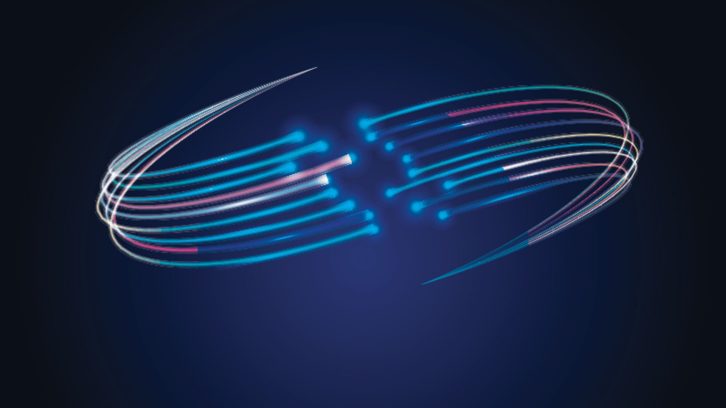
We may have just gotten a glimpse of the future of data transmission, as an international group of researchers just obliterated the record for data speed with an optical chip that transmits 1.8 petabits per second (Pbit/s). That’s right, petabits. That’s almost twice the global internet traffic per second. Such a speed is difficult, if not impossible, for the human mind to comprehend, but it has been achieved thanks to a team comprised of researchers from Technical University of Denmark and Chalmers University of Technology, located in Gothernburg, Sweden.
The blazing fast speed comes from the light emitted from a single optical chip, and its secret lies in its spectrum. The light from the solitary infrared laser is then split into many frequencies, each at a fixed distance from one another. Each frequency can be used to imprint data independent of each other, and are then recombined and sent over an optical fiber to transmit the data.
This technology is poised to revolutionize the efficiency of data transmission, as this speed of 1.8 Pbit/s would typically require 1,000 state-of-the-art lasers. The revelations don’t stop there, however, as the technology is scalable. “Our calculations show that—with the single chip made by Chalmers University of Technology, and a single laser—we will be able to transmit up to 100 Pbit/s,” stated Professor Leif Katsuo Oxenløwe, Head of the Centre of Excellence for Silicon Photonics for Optical Communications (SPOC) at DTU. “The reason for this is that our solution is scalable—both in terms of creating many frequencies and in terms of splitting the frequency comb into many spatial copies and then optically amplifying them, and using them as parallel sources with which we can transmit data. Although the comb copies must be amplified, we do not lose the qualities of the comb, which we utilize for spectrally efficient data transmission.”
If this single laser transmitting 1.8 Pbit/s would replace the need for 1,000 lasers, you can see why cranking that number up to 100 Pbit/s would absolutely revolutionize the industry as we know it, from efficiency, to cost, to environmental impact. More work needs to be done before this technology is fully scaled up, but the future looks very promising.
“All over the world, work is being done to integrate the laser source in the optical chip, and we’re working on that as well. The more components we can integrate in the chip, the more efficient the whole transmitter will be. I.e. laser, comb-creating chip, data modulators, and any amplifier elements. It will be an extremely efficient optical transmitter of data signals,” says Leif Katsuo Oxenløwe.
Here’s to a bright– and more efficient– future.
See also: Intel demos the next generation of Thunderbolt, tripling speeds










